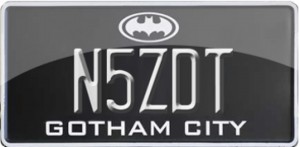It’s funny and a bit strange to me that things have changed so much over the course of time in amateur radio. I wanted to talk to people around the world to find out anything and everything that was happening in far away places.
Since getting my Technician Class license in February 2014, I’ve spent more time listening to and decoding morse on the 40 and 80 meter bands than anything else. Thanks to the addition of computers and software to the hobby, it now takes very little effort to have the computer decipher those dihs and dahs, giving the operator a nice screen printout of what was sent. An operator can even respond to a call by typing what he wants to say and allowing the computer to do the hard part of transmitting it in morse code.
My very first morse decode, after building a homemade balun/unan and hanging a “long wire” out of my home office window, was one that I’ll never forget as long as I live. Because with all I do know about antenna technology, I still couldn’t imagine something like a piece of rubber covered aluminum clothesline wire running across the driveway, attached to the firewood rack on the other side, picking up anything all that distant. But as I spun that dial through the 40 meter band, I suddenly picked up a relatively strong signal…
…CQ CQ DE TX6G TX6G…
At first I was a bit confused. For a signal THAT strong (S7-S8), I was expecting a more local (at least to the USA) call sign to be decoded. I thought that I must’ve gotten the cursor a little off center of the signal. But after rechecking my signal on the waterfall display, I decided to try doing a lookup on the call sign. The results of my search completely blew me away.
It seems that TX6G is the call sign for a DX Expedition team that was transmitting from Raivavae Island, which is part of the Austral Islands in the South Pacific. When I say “South Pacific”, I mean 5145 miles away. In fact the closest major land mass to the place is New Zealand.
Here is a link to their site: http://www.tx6g.com
Well that pretty much sealed the deal for me. I’ve GOT to find a way around my mental block with learning code. Sure, I could use the computer to be my “surrogate code flunky”. But that really just feels like “cheating” in a way. So I’ve downloaded morse programs to my iPhone, iPad and Mac laptops and am going to give it another stab. Somehow all those “dihs” and “dahs” make sense to other people so I’m going to find a way to get them to make sense to me. Wish me luck!
73,
David


